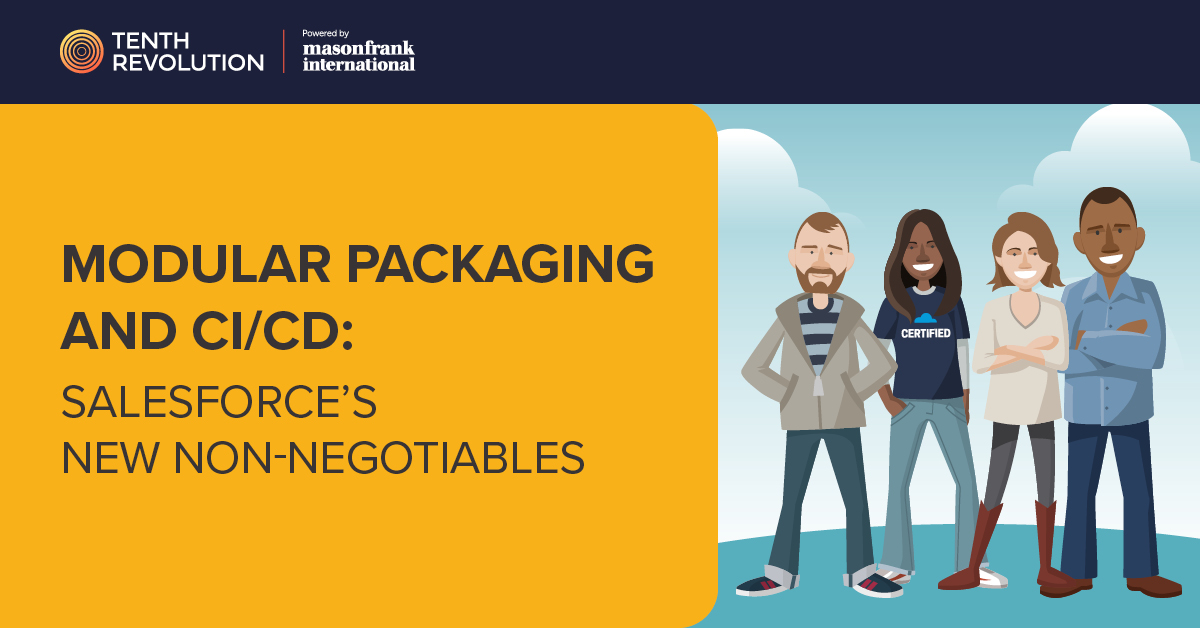
Salesforce delivery is evolving, and the old ways are no longer enough.
Manual change sets, profile-heavy security models, and late-stage testing once got the job done, but they don’t scale in complex, global environments. Enterprises now need faster release cycles, predictable governance, and transparent compliance. That is why modular packaging and continuous integration/continuous delivery (CI/CD) are becoming non-negotiable practices for Salesforce teams.
Why traditional delivery struggles at scale
As Salesforce orgs expand, the pain points of traditional delivery methods become obvious. Change sets are difficult to manage, often unreliable, and nearly impossible to audit. Manual deployments introduce risk, while siloed admin work slows down collaboration.
For executives, the consequences are easy to see: slow releases, higher costs from rework, and increased exposure to compliance issues. These limitations explain why more organizations are investing in modern DevOps practices that bring speed, consistency, and control.
Mason Frank provides Salesforce professionals with DevOps expertise to help enterprises modernize delivery and reduce these risks.
How modular packaging improves flexibility
Instead of treating the org as one giant codebase, modular packaging allows teams to break features into smaller, independent units. Each package can be developed, tested, and deployed on its own schedule.
This approach brings clear advantages:
- Less technical debt: Teams can retire or replace individual packages without destabilizing the entire org.
- Faster development cycles: Parallel work on separate packages keeps projects moving without conflict.
- Simpler upgrades: Dependencies are isolated, which makes it easier to adopt new features or fix issues.
For leaders, this means Salesforce delivery becomes more adaptable, and updates are far less disruptive.
Why CI/CD is now essential
CI/CD automates the entire build, test, and deployment process. Instead of manually moving changes, every update is tracked in source control, tested for quality, and deployed through a repeatable pipeline.
The business benefits go beyond faster delivery:
- Stronger compliance: Automated testing creates a permanent record of evidence for audits.
- Higher reliability: Issues are caught earlier in the process before they reach production.
- Predictable releases: Teams know what is going live, when it will happen, and how it has been tested.
Enterprises with complex compliance requirements see particular value here. With CI/CD, every change comes with an auditable trail, reducing the risk of costly regulatory breaches.
Mason Frank connects organizations with Salesforce talent who can design CI/CD pipelines that balance speed with governance.
What executives can expect from these practices
When modular packaging and CI/CD are adopted together, the results extend beyond technical improvements. Leaders should expect:
- Shorter release cycles that allow Salesforce to keep pace with broader digital initiatives.
- Greater transparency into delivery pipelines, improving both trust and accountability.
- Reduced deployment failures, creating smoother experiences for both employees and customers.
- More value from existing Salesforce investments, as teams spend less time fixing problems and more time delivering innovation.
These are measurable outcomes that make Salesforce a faster and safer platform for enterprise growth.
Why now is the time to change
Every enterprise is under pressure to innovate quickly while staying compliant. Organizations that delay the shift to modular packaging and CI/CD risk falling behind competitors who can bring new features to market more rapidly and with fewer errors.
Salesforce has already signaled its direction with tools like DevOps Center and growing support for packaging. Enterprises that align with this strategy now will be better prepared for the future, while those that wait will be forced to make the change under greater pressure.


